Let’s Kick Around the New Urbanists
October 3, 2010
The “New Urbanists” have the right idea, sorta, maybe, but they remain a rather befuddled bunch. This is shown in their work, the actual places they build. Most of them are laughably pathetic. So this is what we are going to do today: we are going to laugh at how pathetic these “New Urbanists” projects are, and compare them to the great City Design accomplishments of prior generations.
Much of the New Urbanists’ confusion stems, it seems to me, from the inability to distinguish between the Tradtional City, a walking-based design with Really Narrow Streets, and the 19th Century Hypertrophic City, with its super-wide streets and residential areas that are identical to today’s Suburban Hell. For Americans, the 19th Century Hypertrophic City seems “traditional.” However, because the 19th Century Hypertrophic City is in fact the model for Suburban Hell — Suburban Hell is basically the 19th Century Hypertrophic City (“Small Town America”) with more parking — these “New Urbanist” designs tend to have a rather spooky similarity to the Suburban Hell that they are supposedly trying to avoid.
March 7, 2010: Let’s Take a Trip to Suburban Hell
February 21, 2010: Toledo, Spain or Toledo, Ohio?
January 31, 2010: Let’s Take a Trip to New York 2: The Bad and the Ugly
January 24, 2010: Let’s Take a Trip to New York City
Let’s review so we get this VERY CLEAR in our minds. The Traditional City format looks like this:
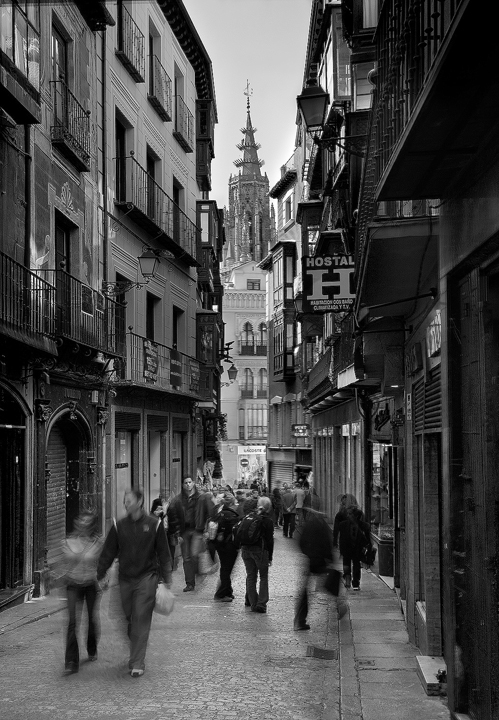
Toledo, Spain
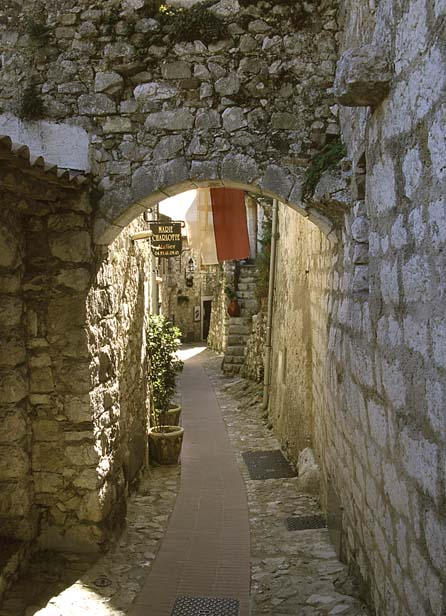
Village in France.
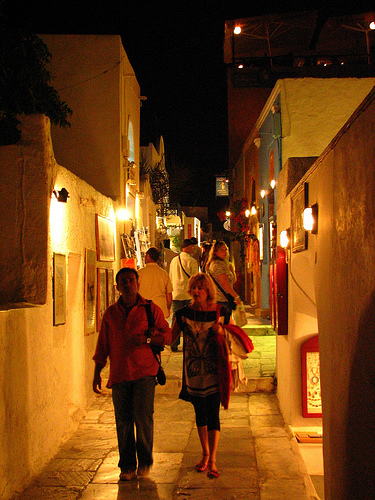
Santorini, Greece
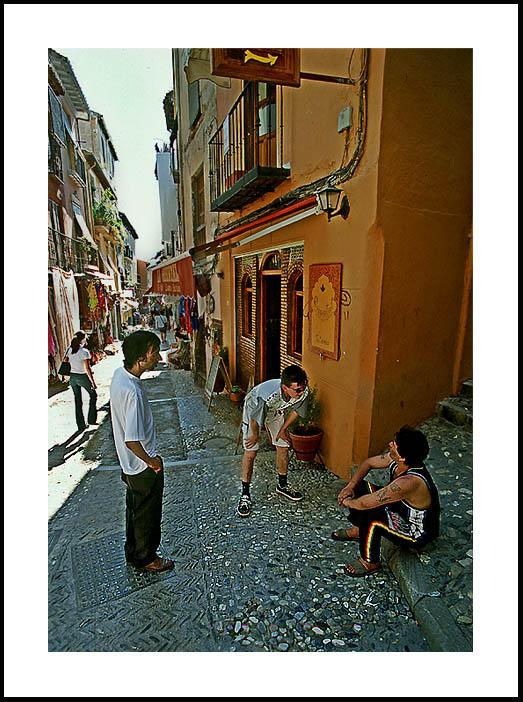
Spain.
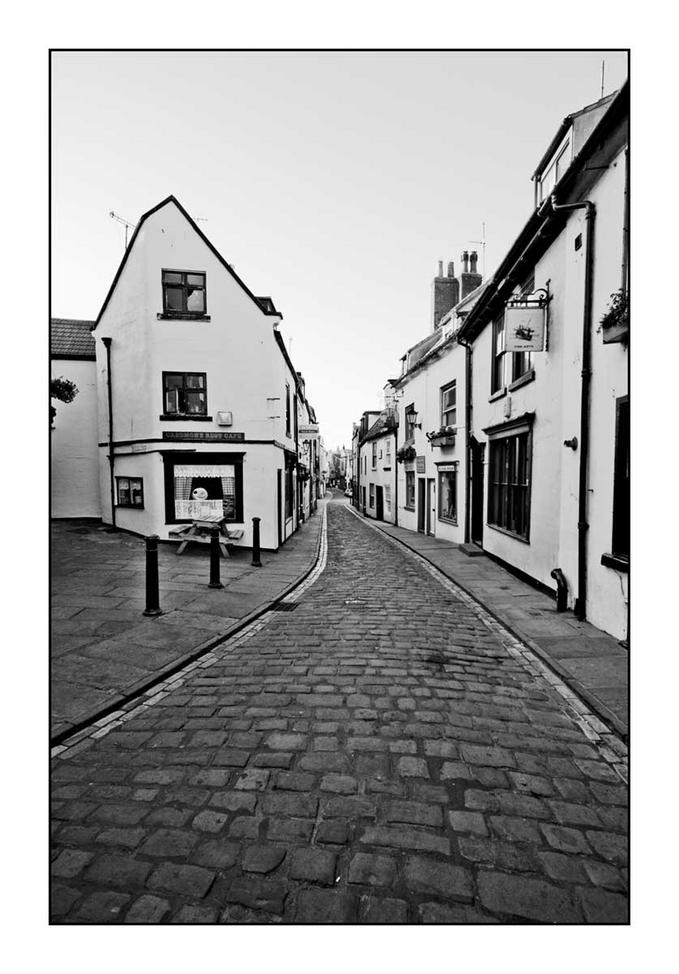
Whidby, Britain
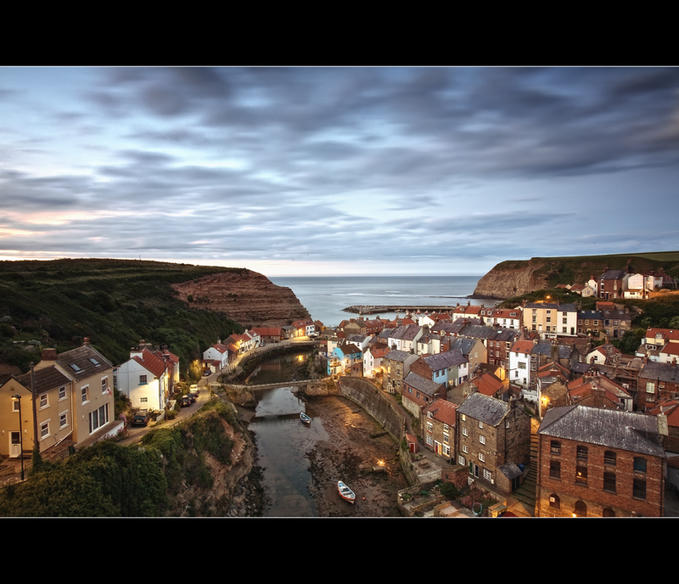
Staithes, Britain
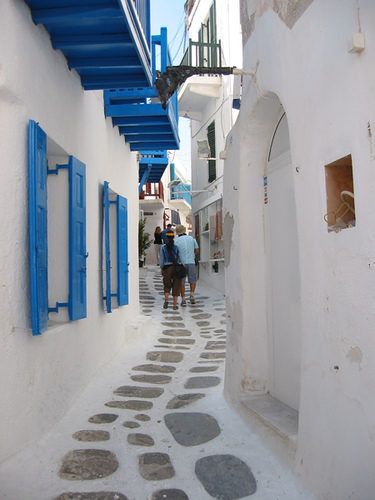
Santorini, Greece.
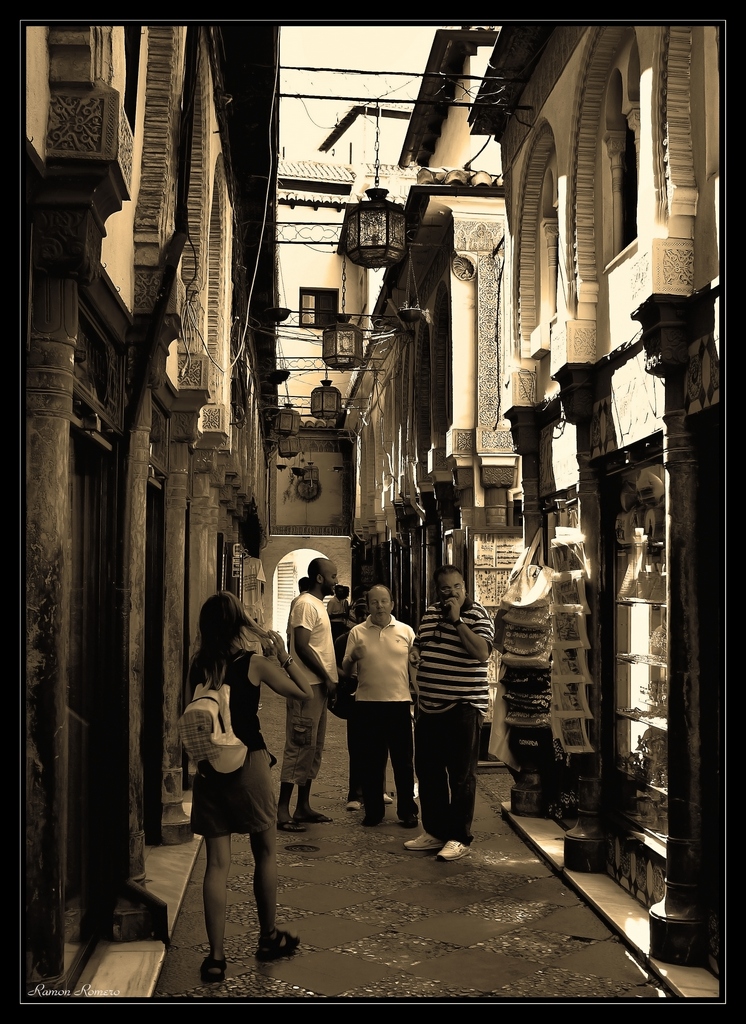
Spain.
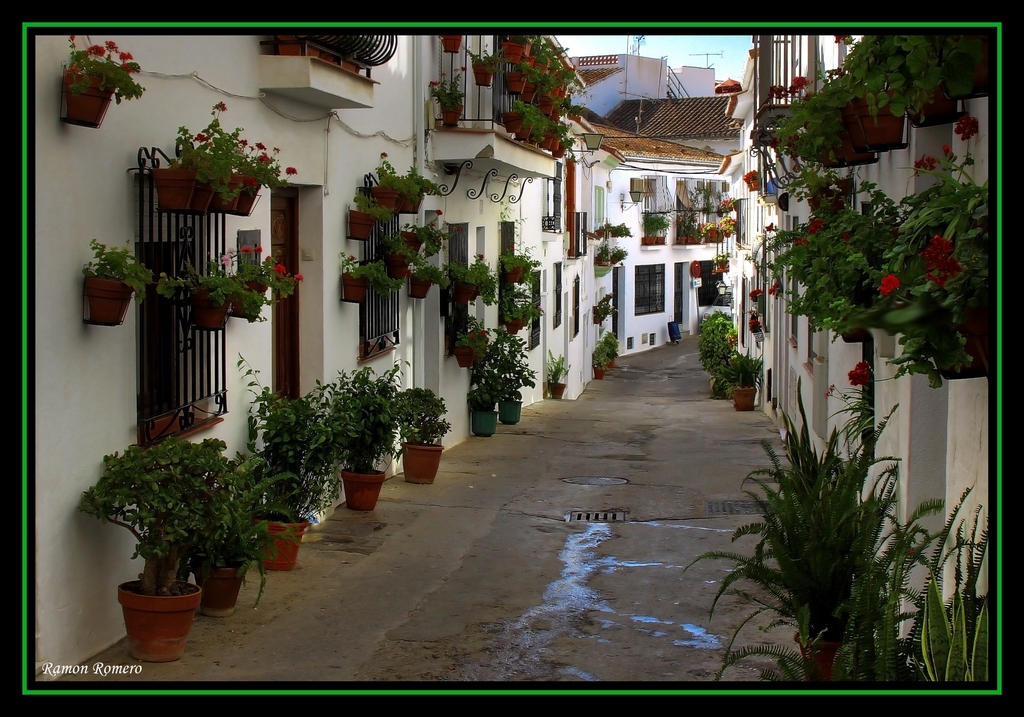
Spain again. Looks just like Eguisheim, in the Alsace region of France! These things are universal.

Kids playing in the street, Spain.
With all these photos from Old Europe, people sometimes get the impression that what I mean by “Traditional City” is old-fashioned. You could imitate Toledo exactly and get a splendid result, but you can also have a contemporary version of the Traditional City. For example, these are photos from Seijo, a residental community (ie a “suburb”) on the western side of Tokyo. Many people commute to central Tokyo. These were all farmlands sixty years ago. This is all recent construction, from a green field.
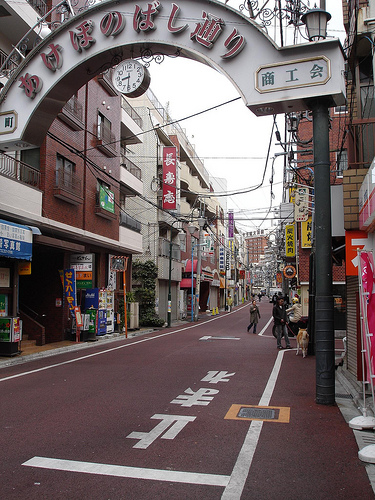
Seijo shopping area. This is about 18-20 feet building to building. Retail on ground level, offices and residential above.
How much automobile traffic do you see here? None!
How about bikes? Also none!
August 1, 2010: The Problem With Bicycles
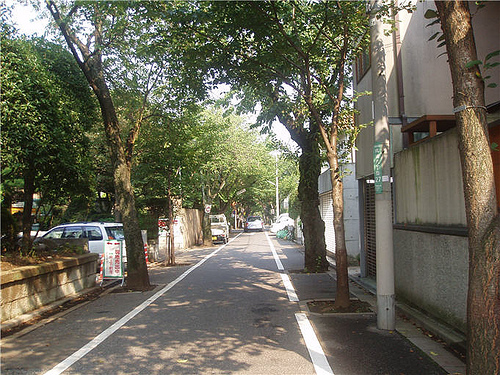
Typical street in Seijo. This is fairly far from the Tokyo city center, and consists mostly of single family detached residences. However, these neighborhoods are within walking distance of the Seijo train station. Look at the street width here. Not much traffic.
Seijo is a rather upscale community. The former president of Sony lives here.
April 18, 2010: How to Live the Good Life in the Traditional City
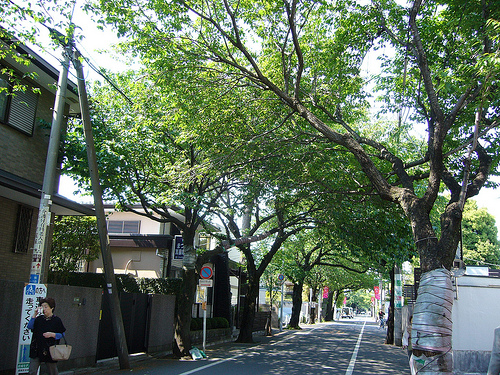
Seijo prides itself on the cherry trees that line the streets. Once again, no traffic here.
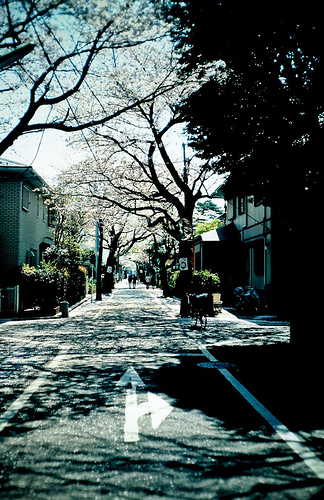
Another Seijo street, with single-family houses on either side. No cars! In the distance, we can see some people walking in the middle of the street.
December 21, 2008: Life Without Cars
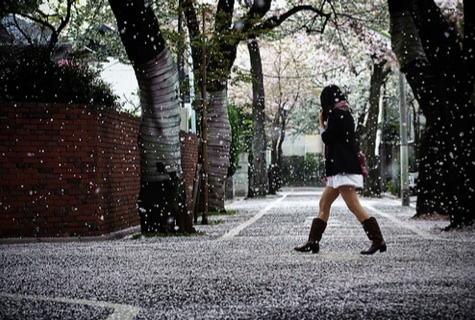
Walking down the middle of the street, during cherry blossom season. This is not a park, it is the middle of the street. No cars!
Note that we have plenty of trees here, but no Green Space.
October 10, 2009: Place and Non-Place
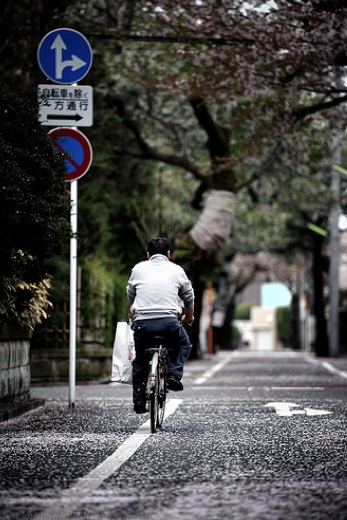
Biking under the cherry blossoms.
Now let’s compare to the 19th Century Hypertrophic City, also known as “Small Town America.”
July 26, 2009: Let’s Take a Trip to an American Village 3: How the Suburbs Came to Be
July 19, 2009: Let’s Take a Trip to an American Village 2: Downtown
July 12, 2009: Let’s Take a Trip to an American Village
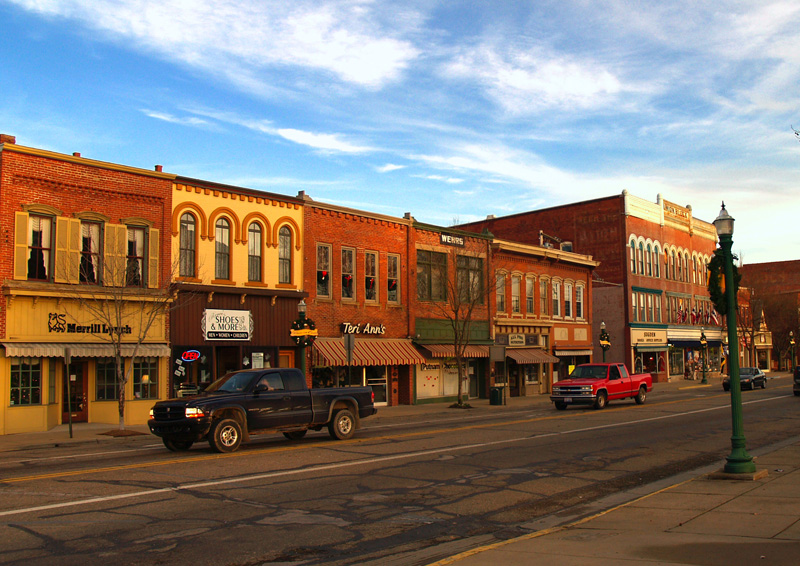
Here we have some rather nice Traditional City type buildngs, but that IMMENSE street! And of course it is filled with CARS. What’s up with that?
Marietta, Ohio.
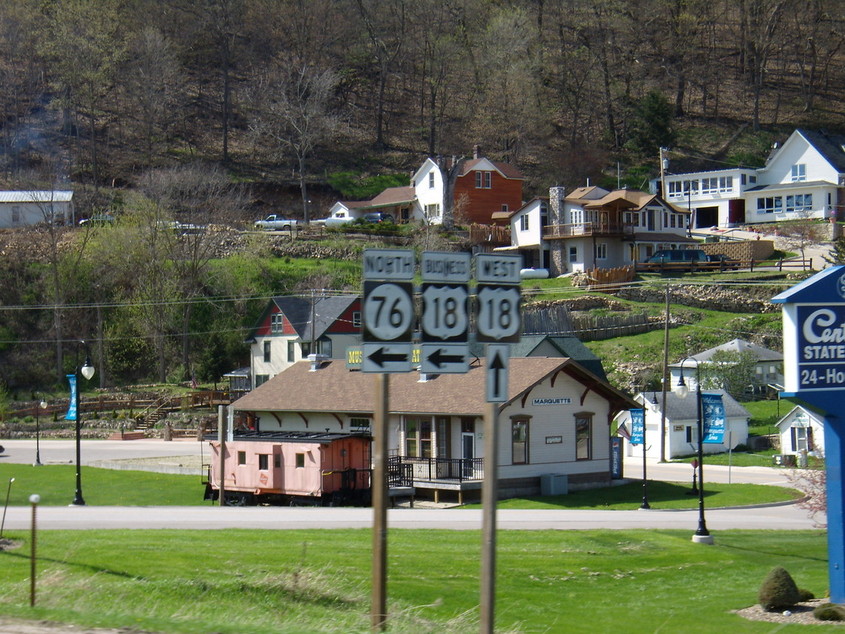
OLYMPUS DIGITAL CAMERA
Marquette, Indiana, the “Coolest Small Town in America.”
Ha ha ha. Ha ha ha ha.
I’ll take Santorini, thanks. The funny thing is, it might actually be the coolest small town in America.
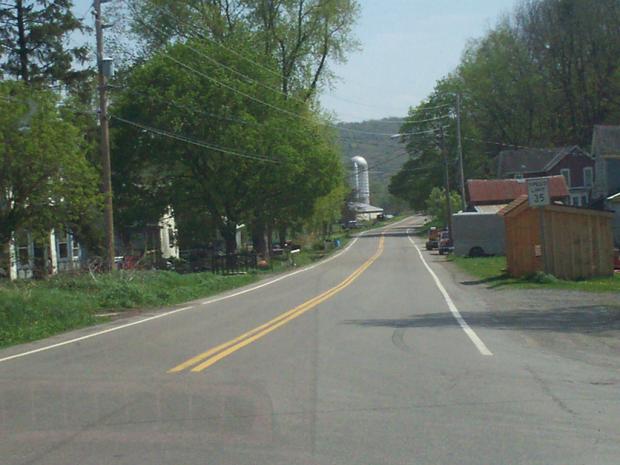
Typical Small Town America scene. What do we see here? Big street. Suburban-style homes. Lots of Green Space. Totally unwalkable. However, this appears to be a 19th century town, not a 20th century automobile suburb. Do you see why I call it 19th Century Hypertrophism?
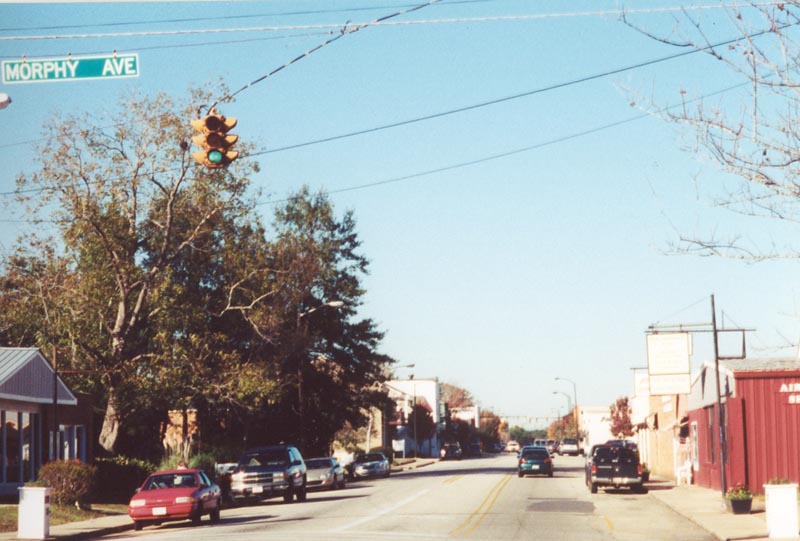
Fairhope, Alabama.
With this background, let’s look at a typical example of New Urbanism.
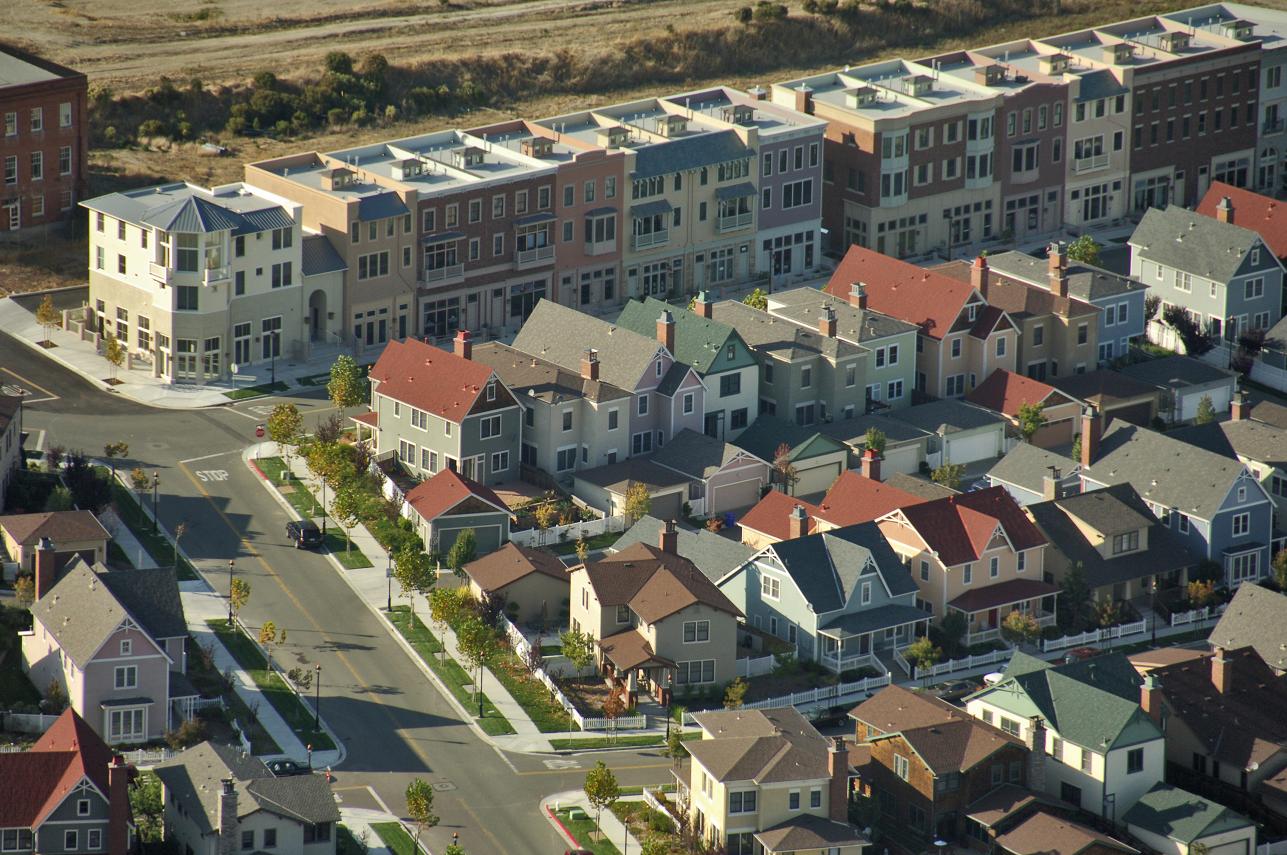
What do we have here?
This is, in fact, almost perfect 19th Century Hypertrophism, with a few New Urbanist tweaks.
We see a few things here: the houses are basically suburban-syle freestanding “farmhouses,” built close together. They are not, for the most part, urban townhouses which are designed to sit side-by-side with no gaps. Of course, they actually are sitting side-by-side, with very small gaps. Don’t you think this is a case of using the WRONG DESIGN (suburban farmhouses) when you should be using a townhouse design?
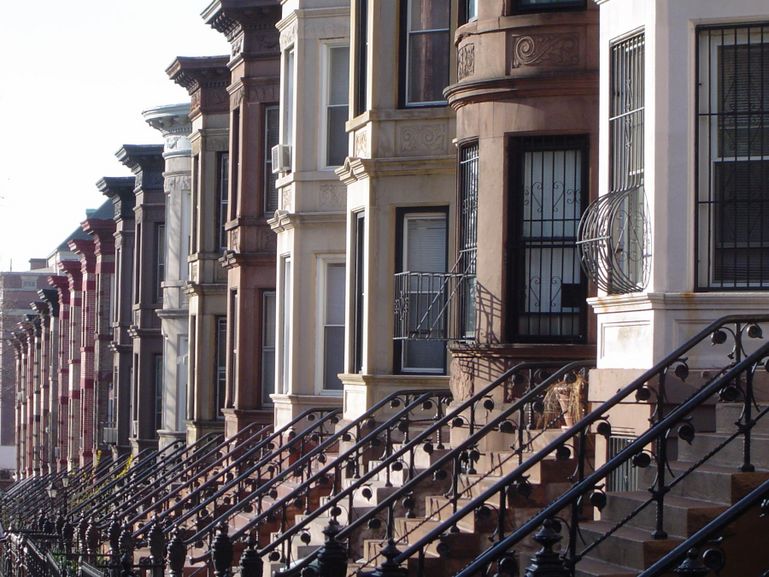
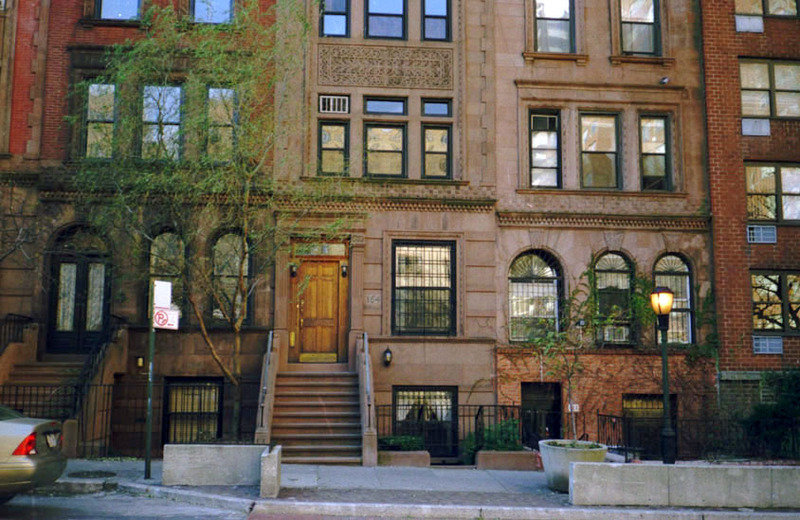
As you know, I don’t think the 19th century brownstone design is necessarily the best or greatest, but it is the appropriate tool in the appropriate place.
Along the commercial street towards the top of the photo, we have typical 19th Century Hypertrophism in the form of some pretty good Traditional City buildings combined with a huge roadway.
Actually, this roadway is relatively modest, with only two lanes instead of the five lanes common to the 19th century model. However, there is no parking!
If there’s no parking, then why have an automobile roadway at all? So we can watch cars pass by without stopping?
On either side we have the usual sidewalks plus a strip of Green Space. The Green Space provides a buffer between people and shops and the roaring noise of traffic that never stops (and parks).
The sensible thing to do would be to make a proper pedestrian environment. You could allow trucks to make deliveries, but for the most part it would be a pedestrian space. Like this:
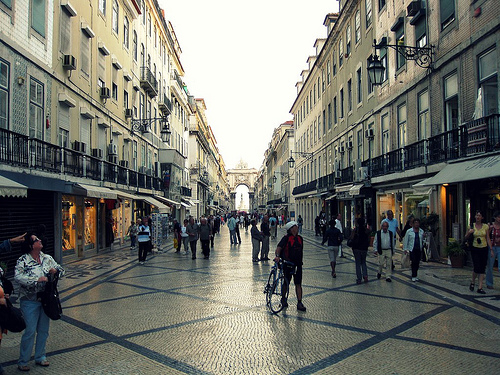
We have similar problems with the residential area. There’s the same pattern of a two-lane street with no parking. Note that the houses don’t have garages or driveways on that street either. There’s no way for a car to stop. Once again, we have the sidewalks and strips of Green Space. If that’s the case, why not get rid of the automobile roadway altogether? You could just have a “mixed use” roadway, which is mostly a pedestrian environment. Just like Seijo above.
The New Urbanist design attempts to segregate automobiles still further by putting them on a separate back alley, where the houses have garages. Now here’s the irony of all ironies: that little back alley utility street built exclusively for cars is actually a pretty good Really Narrow Street! It is about fifteen feet wide, with no sidewalks or Green Space.
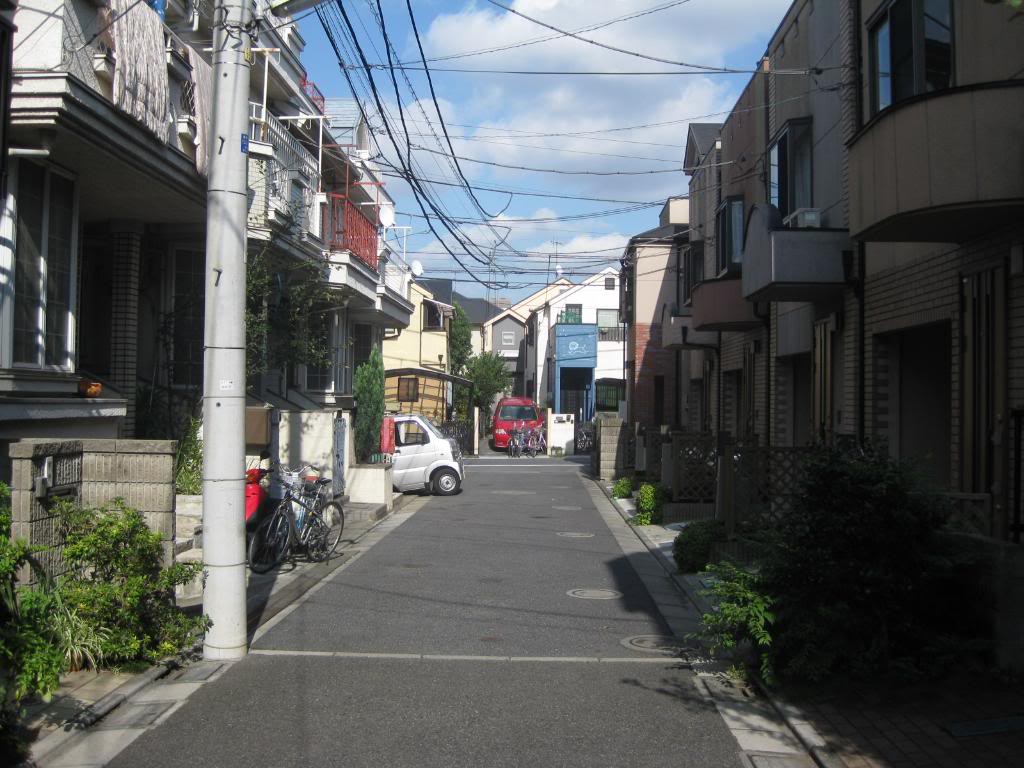
Here are some modest townhouses in the Suginami district of central Tokyo. This street is only about ten or twelve feet wide. Look at the houses on the right. Do you see the garages? You can easily build a garage under your townhouse if you want parking, just like this:
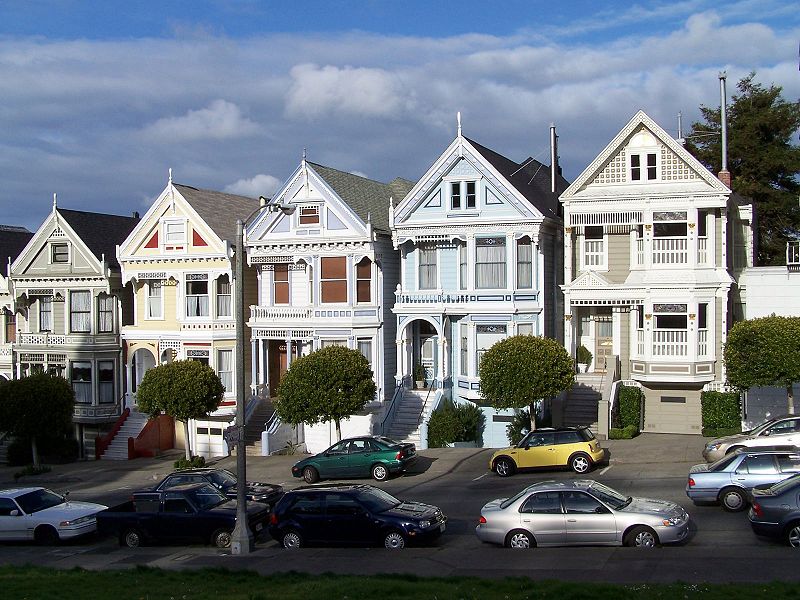
However, in the New Urbanist case, the garages are not built under the house, where they should be. They are built separate from the house, which chews up a huge amount of space. You could build two houses in the space used by one, or, as an alternative, make a little courtyard or garden. Backyards, gardens and courtyards are very much part of the Traditional City design.
Wouldn’t you rather have a lovely little backyard or garden than a stupid garage?
However, this wouldn’t be a suburban backyard, but a Traditional City backyard. Big difference.
Alternately, you could have houses with no yards, but a shared park nearby, within a couple minutes’ walk.
In the New Urbanist design, we have in front of the houses a little bit of useless greenery, plus a white picket fence. Because we are all Tom Sawyer or something like that. This is the worst sort of symbological nonsense. The bit of yard serves as another Green Space buffer from the useless roadway. Better to get rid of the yard, fence, and roadway altogether. The houses still have front porches, however. New Urbanists are big on front porches. Front porches are nice, but they date from the era before cars. Nobody wants to sit on their porch and watch cars go by. (That’s why you need a buffer in the form of a little bit of Green Space and a white picket fence.) Front porches are intended for pedestrian environments. The Traditional City provides many “front-porch-like” elements, primarily balconies, where you can interact with the (pedestrian) street.
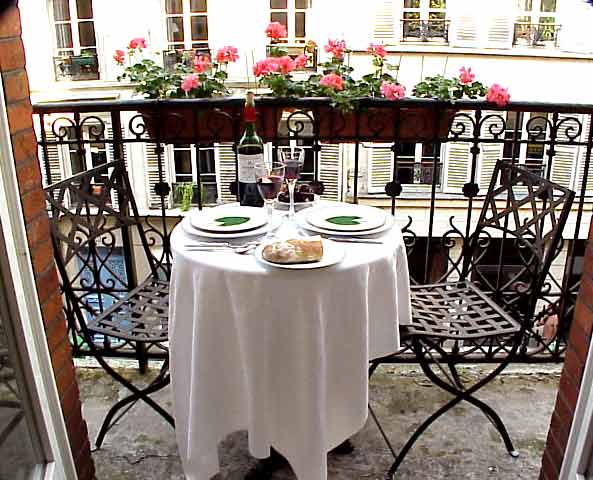
Typical Paris balcony setting. How nice! Look at the width of the street. You can see over to the building on the other side. Really Narrow, isn’t it? How much traffic do you think is roaring down below? Ideally, not much.
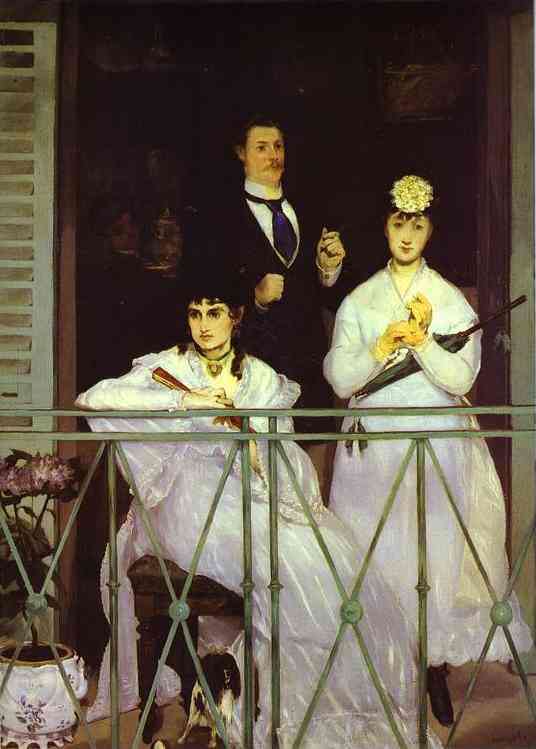
The Balcony, by Edouard Manet (1832-1888)
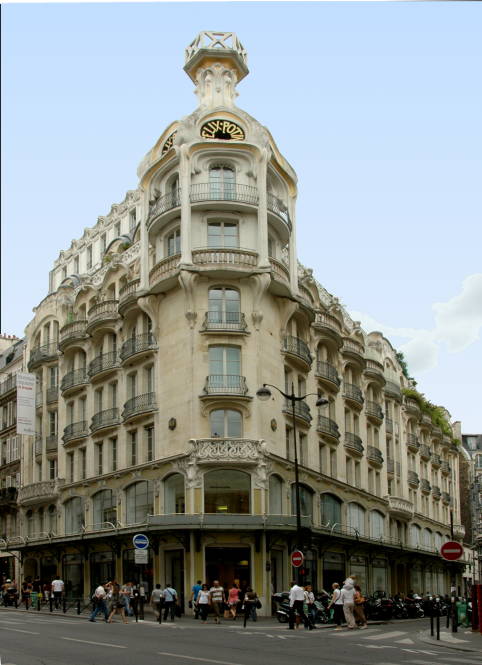
Felix Potin building, Paris, 1904.
Also, look at the balconies in the above photo of the Suginami district, Tokyo.
The last element I would point out is the two-lane road running roughly top-to-bottom on the photo of the New Urbanist development. This is actually about right, as an arterial street. I would get rid of the Green Space. More like this:
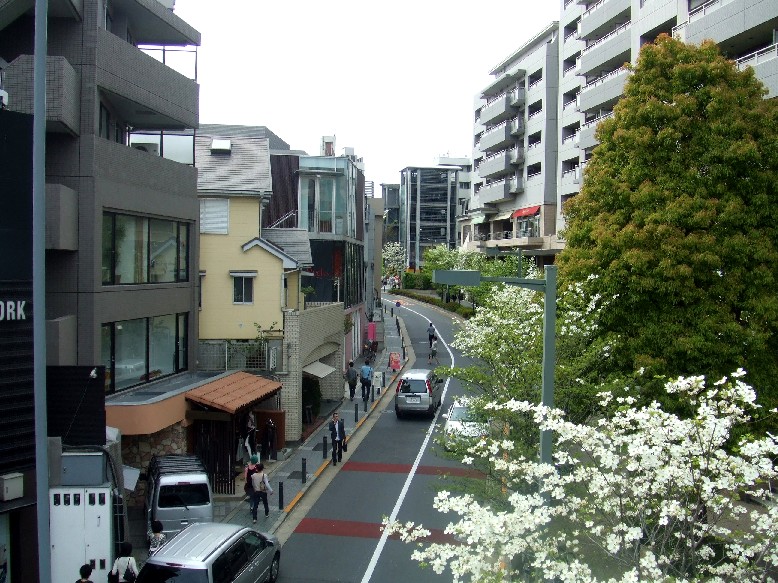
Daikanyama district, central Tokyo.
The residential streets can be very narrow, but within a quarter mile or so, you can access a larger arterial street with dedicated auto traffic lanes. This is a nice one, with shops along either side, not useless Green Space. In fact, if you build tall buildings (like on the right in the Daikanyama photo) along the arterial street, they can serve as excellent noise blockers, which makes the Really Narrow Street neighborhoods behind them very quiet and pleasant.
To summarize:
1) Commercial/shopping area with a Really Narrow pedestrian street, accessible by delivery vehicles.
2) Traditional City type townhouses on a Really Narrow pedestrian street, with garages.
3) An arterial street nearby.
That’s all there is to it. It is so easy. Actually, it would be cheaper to build things the right way — the Traditional City way — rather than this New Urbanist abortion. You could fit twice as many houses in the available land (because no detached garages and front yard Green Space, and narrower streets). That would mean double the profits for the developer.
Kaching Kaching!
August 22, 2010: How to Make a Pile of Dough with the Traditional City
Actually, if you built townhouses like in the San Francisco example above, and used Really Narrow Streets like in Seijo, I think you could fit four times as many houses in. Look at the photo of the San Francisco houses. How wide are they? About thirty feet maybe? Possibly less. Now look at the New Urbanist development. You’ll see what I mean.
Or, alternatively, you could make each house have a proper Traditional City yard, garden or courtyard, which would be about a million times better than that stupid little patch of grass. Which do you think you could sell for more money?
2) The house with a beautiful Traditional City yard, garden or courtyard?
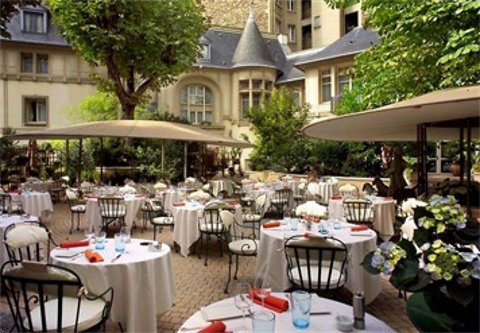
Courtyard cafe, Paris hotel.
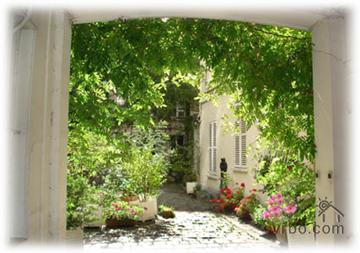
Entrance to courtyard, private residence, Paris.
So you see, everybody wins when you do things the right way. People who live there win, because it is better, and also cheaper! The developer wins. Even Mother Nature wins, because the walking-based Traditional City is by far the most environmentally-friendly form of City Design.
April 19, 2009: Let’s Kick Around the “Sustainability” Types
We will look at more New Urbanist screwups in the future.
Other commentary in this series:
August 22, 2010: How to Make a Pile of Dough with the Traditional City
August 1, 2010: The Problem With Bicycles
June 6, 2010: Transitioning to the Traditional City 2: Pooh-poohing the Naysayers
May 23, 2010: Transitioning to the Traditional City
May 16, 2010: The Service Economy
April 18, 2010: How to Live the Good Life in the Traditional City
April 4, 2010: The Problem With Little Teeny Farms 2: How Many Acres Can Sustain a Family?
March 28, 2010: The Problem With Little Teeny Farms
March 14, 2010: The Traditional City: Bringing It All Together
March 7, 2010: Let’s Take a Trip to Suburban Hell
February 21, 2010: Toledo, Spain or Toledo, Ohio?
January 31, 2010: Let’s Take a Trip to New York 2: The Bad and the Ugly
January 24, 2010: Let’s Take a Trip to New York City
January 10, 2010: We Could All Be Wizards
December 27, 2009: What a Real Train System Looks Like
December 13, 2009: Life Without Cars: 2009 Edition
November 22, 2009: What Comes After Heroic Materialism?
November 15, 2009: Let’s Kick Around Carfree.com
November 8, 2009: The Future Stinks
October 18, 2009: Let’s Take Another Trip to Venice
October 10, 2009: Place and Non-Place
September 28, 2009: Let’s Take a Trip to Barcelona
September 20, 2009: The Problem of Scarcity 2: It’s All In Your Head
September 13, 2009: The Problem of Scarcity
July 26, 2009: Let’s Take a Trip to an American Village 3: How the Suburbs Came to Be
July 19, 2009: Let’s Take a Trip to an American Village 2: Downtown
July 12, 2009: Let’s Take a Trip to an American Village
May 3, 2009: A Bazillion Windmills
April 19, 2009: Let’s Kick Around the “Sustainability” Types
March 3, 2009: Let’s Visit Some More Villages
February 15, 2009: Let’s Take a Trip to the French Village
February 1, 2009: Let’s Take a Trip to the English Village
January 25, 2009: How to Buy Gold on the Comex (scroll down)
January 4, 2009: Currency Management for Little Countries (scroll down)
December 28, 2008: Currencies are Causes, not Effects (scroll down)
December 21, 2008: Life Without Cars
August 10, 2008: Visions of Future Cities
July 20, 2008: The Traditional City vs. the “Radiant City”
December 2, 2007: Let’s Take a Trip to Tokyo
October 7, 2007: Let’s Take a Trip to Venice
June 17, 2007: Recipe for Florence
July 9, 2007: No Growth Economics
March 26, 2006: The Eco-Metropolis

